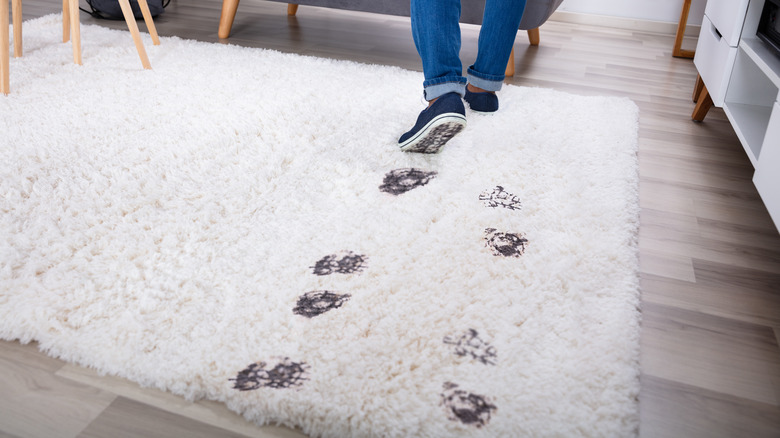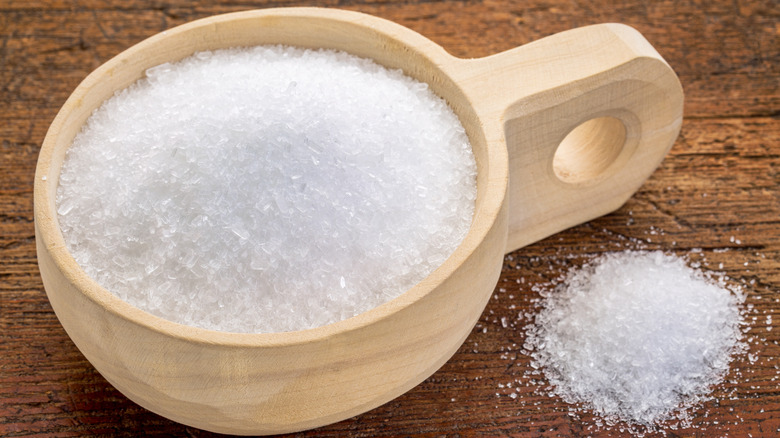This Common Household Ingredient Is The Answer To Muddy Footprints
Muddy footprints from household traffic can seem like a neverending problem. However, there's no need to break out the mop or carpet cleaner every time you see a muddy floor. Instead, use Epsom salt to make cleanup faster and easier. Then, you'll have time to check out some entryway or mudroom upgrades that can help solve the problem for good.
Cleaning a muddy floor is challenging primarily because it's wet. While dirt can simply be swept or vacuumed away, mud requires you to either mop, use a carpet cleaner, or wait for it to dry before cleaning. That's where Epsom salt comes in.
Salt is remarkably absorbent: it's hygroscopic, which means it attracts water, helping a damp area dry faster. So, if you apply Epsom salt to a muddy floor, it'll soak up the water in a matter of minutes, leaving you with nothing but dirt to sweep or vacuum up. Of course, other types of salt can work as well, but Epsom salt is a household product often found in large quantities, making it perfect for this task.
How to clean a muddy floor with salt
To clean those muddy footprints from your floors, spread Epsom salt over the area so it's about ¼ inch thick. Give it 15 minutes to sit, and it should be nice and dry. This trick will even work on carpet: the dirt won't stick to it very well without water. Then, you can simply clean the floor like normal.
However, keep in mind that salt can damage or stain certain types of floors. You'll likely want to spot-test this tactic before using it. Wood and tile floors are especially prone to getting scratched or stained by salt. Carpets can also pick up salt stains.
If you apply salt to muddy floors, though, the mud will provide a barrier between salt and floor, reducing the chances of damage. Just make sure not to use more salt than you need, and clean it up quickly.

